| Feline Tooth Resorption |
 |
- A destructive process resulting in loss of tooth structure.
- Can involve the root and/or the crown.
- Causes pain and sensitivity.
- Oftentimes goes undetected at home because pets rarely show symptoms of oral pain.
|
| What Causes Tooth Resorption? |
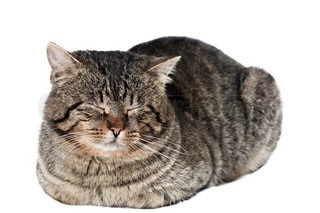 |
- Most cases of feline tooth resorption are idiopathic, meaning we don’t know what causes them.
- Despite extensive research there has been no definitive link made to diet, vaccines, or other diseases.
- Without a definitive cause, there is nothing that we can do to prevent these lesions.
- Early detection and treatment is important to prevent pain and secondary infection.
|
| Clinical Signs at Home |
 |
- Frequently, cats show no clinical signs.
- With advanced lesions cats may “chatter,” drool, drop food, chew on one side of the mouth, swallow food whole or have a decreased appetite.
- They may be lethargic and seek time alone, which often isn’t apparent until after they receive treatment.
|
| Awake Oral Exam |
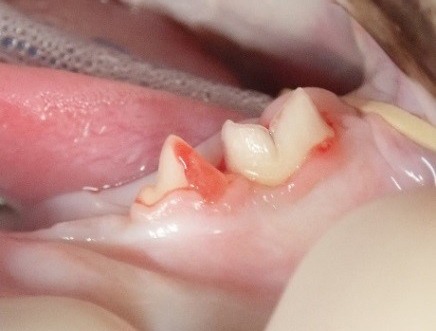 |
- Missing teeth with no history of dental extractions (these are end-stage lesions where the crown of the tooth has fallen off on its own).
- Focal red, inflamed, or bleeding tissue at the gum line of the affected tooth.
- Appearance of gum tissue growing over the crown.
- Chattering of teeth when touched, indicating sensitivity/pain.
|
| Under General Anesthesia |
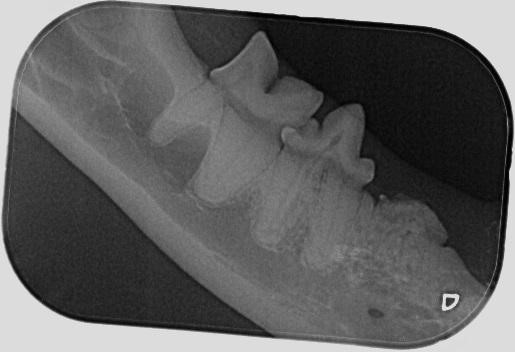 |
- Full mouth radiographs are important to identify lesions that are early in the disease process and not visible on awake exam, or are affecting the root of the tooth and have not yet reached the crown of the tooth.
- Probing along the gum line with a sharp dental probe will identify early lesions that have developed a hole in the enamel.
|
| Types of Feline Tooth Resorption |
 |
- Type 1 – The periodontal ligament space is still visible around the root of the tooth and requires extraction of the entire root structure.
- Type 2 – Loss of the periodontal ligament space around the root with replacement by bone. This type of lesion can be treated with a crown amputation (see below).
|
| Treatment Options |
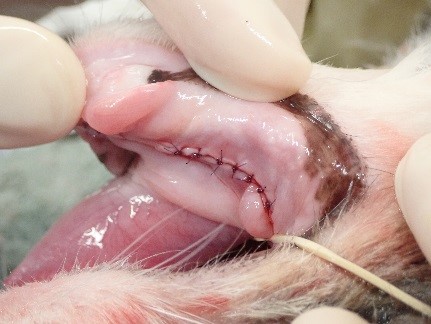 |
- Extraction of the entire crown and root in type 1 lesions.
- Crown Amputation – only the crown of the tooth is removed (amputated) with retention of the root that has undergone or is in the process of resorption.
- The gum tissue is closed over the site with sutures that dissolve over several weeks.
|
| What About Tooth Resorption in Dogs? |
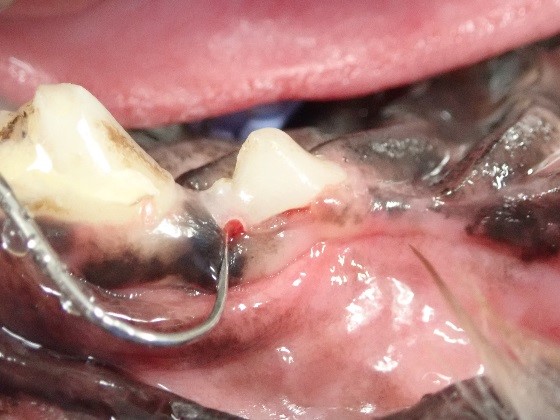 |
- Common in medium – large breed dogs and avid chewers.
- Often an incidental finding, pets rarely show oral pain (dropping food, drooling, decreased appetite).
- 1st premolars are commonly affected.
- If isolated to the root of the tooth, monitoring with radiographs is recommended.
- If there is advanced root resorption or crown involvement, extraction or crown amputation is recommended.
|







